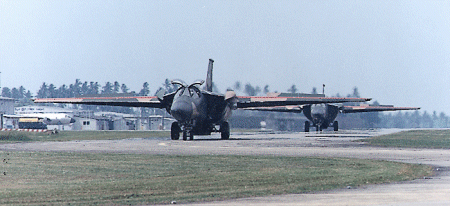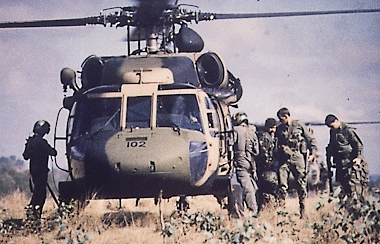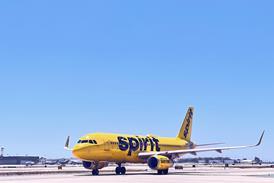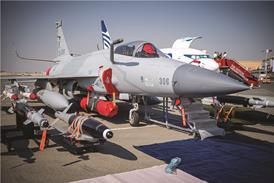Peter La Franchi/CANBERRA

US policy on technology release has become a sticking point in an Australian Defence Force (ADF) project to develop an integrated family of electronic warfare self-protection (EWSP) systems for its combat and support aircraft.
The Australian Department of Defence (DoD) says the US State Department has placed major restrictions on US companies bidding for the programme and is insisting that:
• integration and test activities must be performed by US contractors;
• signature reduction methods must not be released or offered to Australia;
• detailed design data for systems must not be released to Australia.
The restrictions also state that electronic warfare controller source codes must remain under the control of US companies. Australian defence officials say the USA has also made mandatory specific, but undisclosed, performance limitations on equipment offered.
The Australian DoD has responded by directing that all contenders for the programme must offer the alternative of a non-US electronic warfare controller suite if they are offering US-sourced equipment. The State Department ruling has also been put on the agenda for the next round of meetings of the Australia-US Defence Acquisition Council this year.
The Australian EWSP programme - designated Project Air 5416, but referred to locally as Project Echidna after the spiny Australian marsupial - is midway through a tender process, with four teams shortlisted.
Lockheed Martin heads a team that includes Boeing Australia and BAE Systems. BAE is also partnered with Northrop Grumman, which had originally teamed with Marconi Electronic Systems and Hunter Aerospace. BAE subsequently merged with Marconi and acquired Hunter, based at Newcastle, New South Wales, in November .
Raytheon is linked with Adelaide-based Vision Abell. The team had included Israel's Elta and Elisra, but Raytheon was forced to drop both companies from its bid after the US State Department released its rulings. Elta and Elisra now want to join the only Australian-led bid, headed by Tenix Defence Systems. The State Department rulings mean, however, that Tenix would be required to drop its teaming arrangements with ITT and TRW if it allowed the Israeli firms into the team.
Ironically, last month, the Australian Defence Acquisition Organisation selected the Elta EL/L-8200 electronic countermeasures jamming pod as the preferred equipment for its Project Air 5391 Phase 7. That requirement aims to provide Royal Australian Air Force (RAAF) General Dynamics F-111 strike aircraft with an interim self-protection capability, pending the outcome of the Echidna competition. Rival proposals by Northrop Grumman and ITT, offering the ALQ-131, and Raytheon, offering the ALQ-184, were dropped from the competition at an early stage.
Initial activity
All four Project Echidna contenders are expected to have completed negotiations for funded initial design activity (IDA) contracts with the Australian DoD by the end of this month.
The Echidna requirement is based on the development of a common family of electronic warfare self-protection modules that would be carried by RAAF F-111s and Lockheed Martin C-130Js and Australian Army Sikorsky S-70A-9 Black Hawk and Boeing CH-47D Chinooks as well as Royal Australian Navy Westland SK-50A Sea Kings.
Later phases of the project will include RAAF Lockheed Martin AP-3C Orion maritime patrol aircraft and BAE Hawk lead-in trainers. Consideration is also being given to extending the project to include the army's Project Air 87 armed reconnaissance helicopter and the RAAF's Project Air 5190 light tactical airlifter requirement. Echidna equipment will not be fitted to the RAAF's 13 F-111G strike aircraft unless approvals are given to modernise their avionics to the standard carried by the F-111C.
The total Echidna acquisition includes the proposed purchase of 179 sets each of electronic warfare controller units, radar and missile warning receivers and countermeasures dispensing systems, 145 laser warning receivers, 46 electronic countermeasures jamming systems and 12 directed infrared countermeasures units.
The project has evolved significantly over the past five years, It was first developed as an amalgam of the RAAF's Project Air 5491 to upgrade F-111C electronic warfare suites and a related project, known as Air 5394, to develop an EWSP system for ADF transport aircraft. A tender process for the combined requirement was started in August 1996, based on finalising a source selection in 1999 and undertaking the initial integration and testing of the module family during 2000-1.
A review of the combined project was launched in March 1998, with a market survey released the following month. Project Air 5416, which replaced the two earlier concepts, was established in August 1998. Four months later, a restricted request for tender (RFT) was released for the development of EWSP suite architectures and aircraft integration strategies via funded IDA contracts.
Eight companies were invited to bid for the IDA tender requirement, with a shortlist of three to be developed by the second quarter of last year, with study contracts worth a total of A$7.8 million ($4.9 million) to be negotiated by June 1999. A second-phase RFT, to select and begin implementation of the EWSP solution, was planned for release to shortlisted IDA recipients in October last year, with a view to selecting a source by mid-2000.
The revised schedule has proved difficult to sustain, however. The IDA tender process did not close until last April, with only four responses received from the original eight bidders. Reconsideration of the broader architecture design requirements delayed judgement on the final shortlist of contenders until last September, when it was decided to keep the competition open to all four teams.
Project timeframes call for the IDA study to be carried out in phases, with Lockheed Martin to hand over its results at the end of this year, and Tenix required to finalise its design work by April next year.
Non-US suppliers

The current competition's final stage - a restricted RFT for initial implementation of the new EWSP architecture on army S-70A-9 Black Hawks - is due for release to the contenders at the end this year, with responses due in mid-2001. Echidna aims to have six modified S-70A-9s re-entering operational service by December 2003 at the latest.
Australian concerns about US restrictions led the Echidna project office to stage a series of briefings in late November for non-US electronic warfare equipment suppliers. To assist in engaging non-US suppliers, the Australian DoD is to release classified project specification data, government to government, to Canada, Denmark, France, Germany, Israel, Italy, South Africa, Sweden and the UK.
Despite the push to re-engage non-US suppliers in the competition, defence analysts in Canberra predict that Australia will probably not walk away from US-sourced solutions.
For Australia to choose a non-US solution, say the analysts, a fundamental shift in air power doctrine is required, including a stronger political commitment to develop an effective Australian industrial support base for key defence capabilities.
The Echidna project highlights a complex network of tensions in Australian and US defence policy, say analysts. This includes Australia's policy framework, which identifies indigenous EW capability for aircraft self-protection as a key priority; the RAAF's own desire for seamless interoperability with the US Air Force; and the USA's desire for closer interoperability with Australia.
According to Kim McLeery, president of the Australian Chapter of the Association of Old Crows, an EW industry body, a key factor is the failure of bilateral defence technology agreements between Australia and the USA to flow down to working level within the State Department. He says efforts are under way within the Australian DoD to deal with this, but these will succeed only with extensive US co-operation.
McLeery says Project Echidna also reflects problems in the Australian DoD's efforts to foster EW capability in local industry - an area that requires extensive policy attention. Australia's EW industry is developing a strong capability relevant to ADF requirements, says McLeery, but it does not want to "reinvent the wheel" when there is a suitable product available overseas. "Notwithstanding that," he says, "if the requirement is within the scope of the local industry, we should be given the opportunity to try and deliver it."
Source: Flight International























